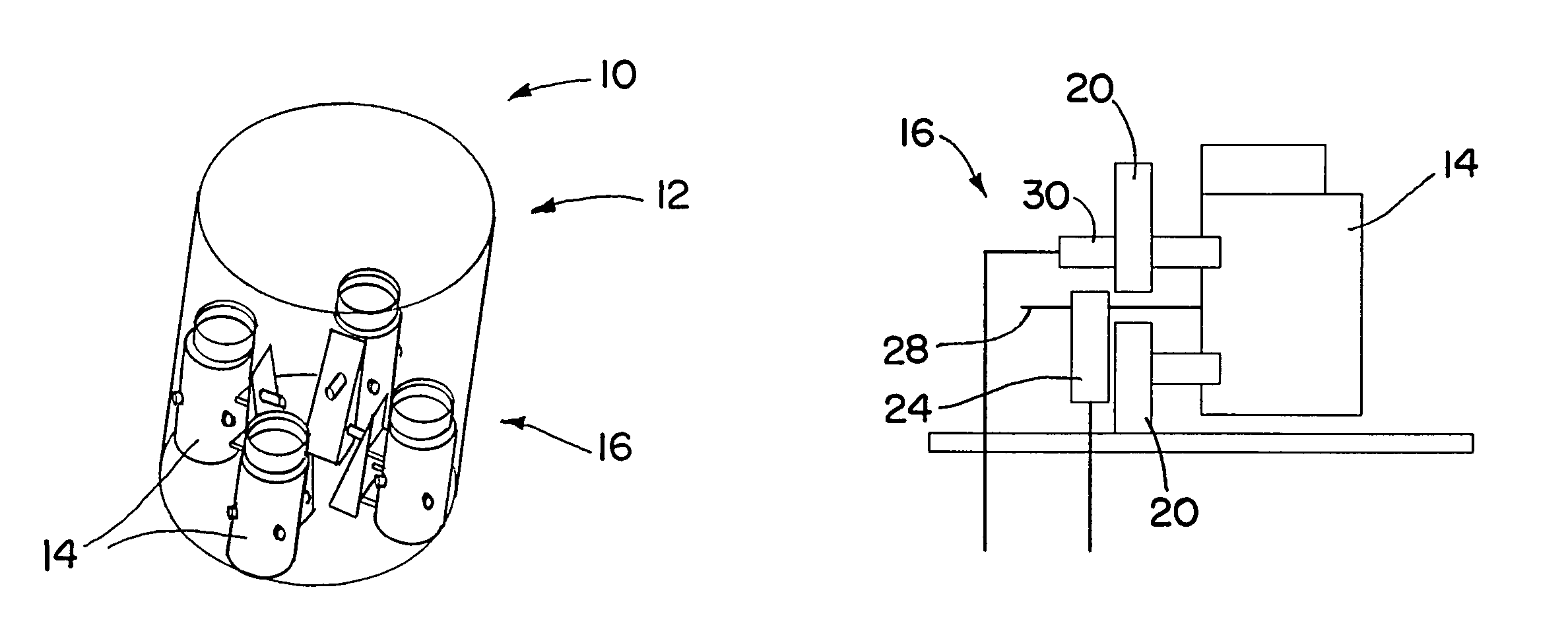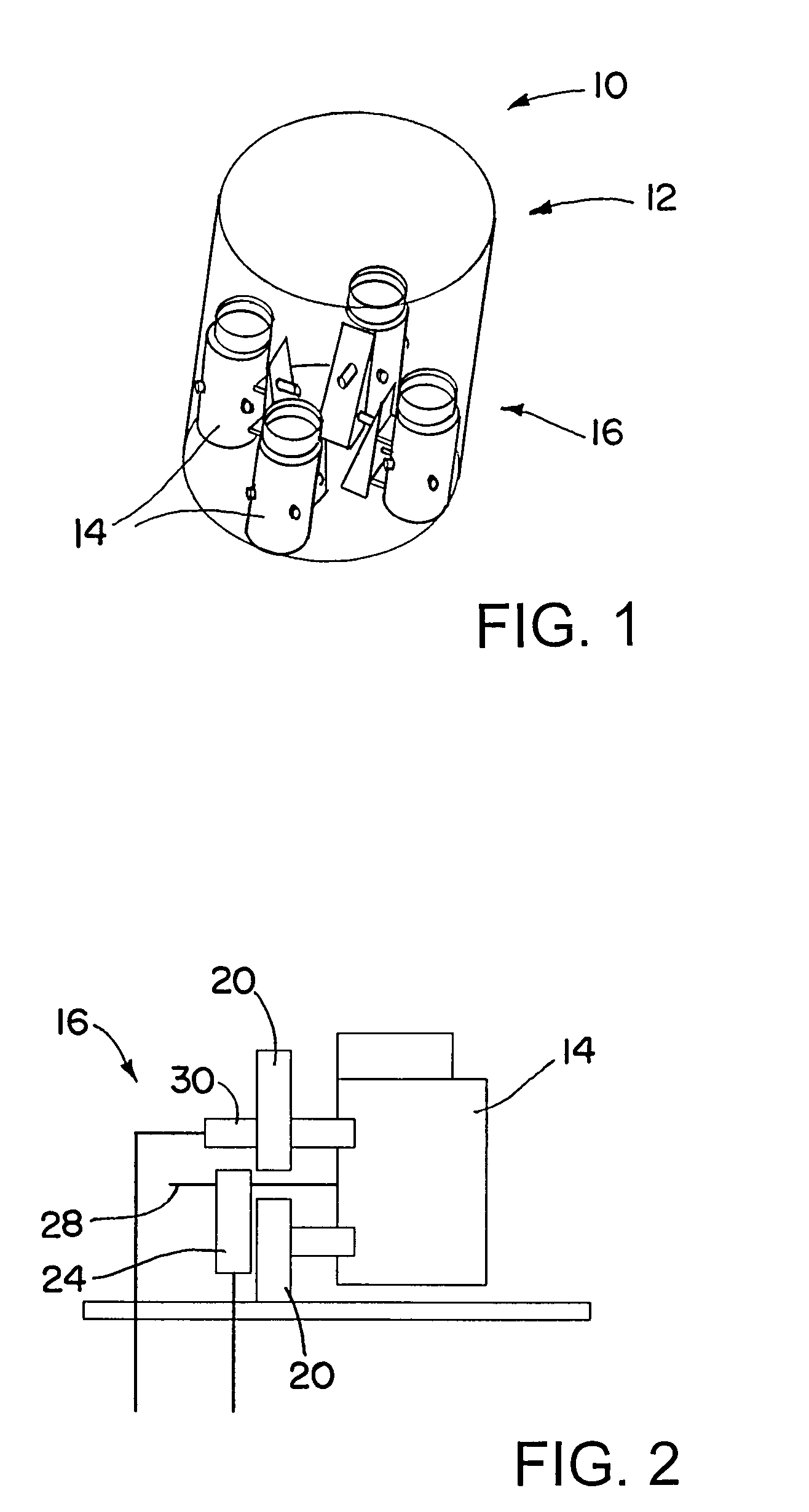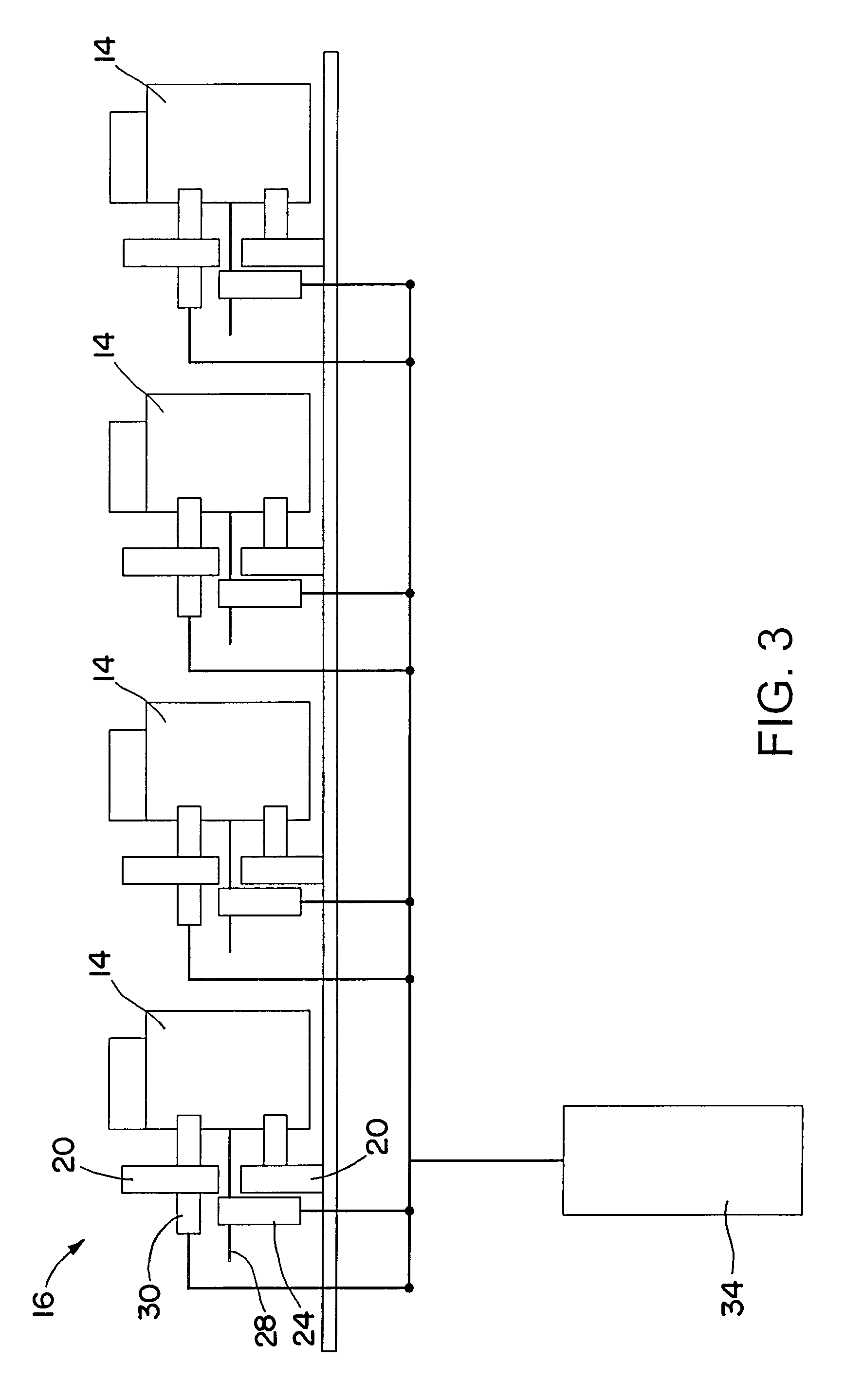Missile with system for separating subvehicles
a technology of subvehicle and missile, which is applied in the direction of launching weapons, cosmonautic vehicles, transportation and packaging, etc., can solve the problems of large shock load on the subvehicle, unsatisfactory heaviness, and complex structure of the subvehicle, and achieves the difficulty of integrating with other systems
- Summary
- Abstract
- Description
- Claims
- Application Information
AI Technical Summary
Benefits of technology
Problems solved by technology
Method used
Image
Examples
Embodiment Construction
[0038]A missile includes several subvehicles that are initially mechanically coupled to a missile main body, and a separation system for separating the subvehicles from the missile main body. The separation system has a single triggering mechanism to simultaneously provide energy to separate all of the subvehicles. This advantageously provides only a single shock to the system by actuating the system to separate the subvehicles. By limiting the shocks to the single shock of actuating the energy system and the shocks of the mechanical disengagement of the individual subvehicles, the disengagement system has improved performance. The mechanical coupling between the subvehicles and the main body may be provided by retentions rods that are severed during the separation process. The severing of the retention rods may be accomplished at the same time as the severing of cryogenic lines linking the main body and subvehicles. The subvehicles may be separated from the main body in radial dire...
PUM
 Login to View More
Login to View More Abstract
Description
Claims
Application Information
 Login to View More
Login to View More - R&D
- Intellectual Property
- Life Sciences
- Materials
- Tech Scout
- Unparalleled Data Quality
- Higher Quality Content
- 60% Fewer Hallucinations
Browse by: Latest US Patents, China's latest patents, Technical Efficacy Thesaurus, Application Domain, Technology Topic, Popular Technical Reports.
© 2025 PatSnap. All rights reserved.Legal|Privacy policy|Modern Slavery Act Transparency Statement|Sitemap|About US| Contact US: help@patsnap.com



